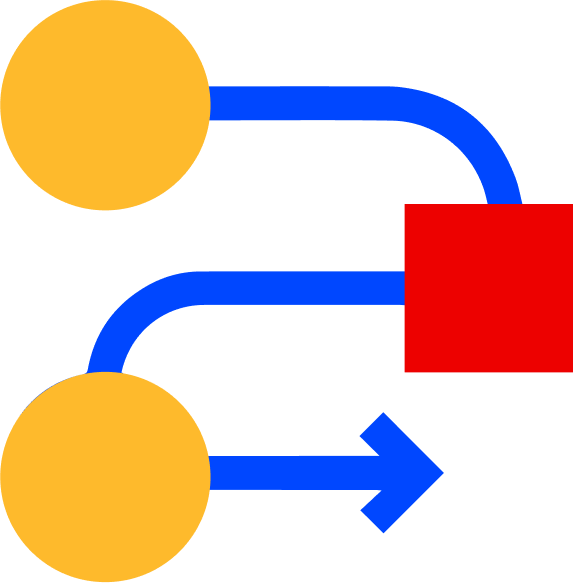The Hidden Cost of Manual Preservation Requests in Multi-App Environments


When an investigation or litigation is likely to occur, a preservation request stops data from being changed or deleted. This request is presented in the form of a formal instruction, instructing everyone to hold onto evidence until the matter is resolved. Without a preservation request, essential files may be deleted, resulting in a case that's challenging to defend.
Gone are the days when data lives in Word documents and emails. It's now stored across chats, cloud files, social media platforms, and that's only half of it.
When businesses rely on manual preservation requests, they're taking a risk they can't afford. It only takes one misstep to throw out an entire case, which is why more businesses are relying on automation.
The result? A smart, safer way of managing preservation requests.
What Are Preservation Requests?
With an investigation or litigation, a preservation request halts the collection of data. This ensures that nothing is deleted or overwritten.
It's part of broader legal holds, or a set of formal instructions. These are designed to maintain the integrity of the information, and they remain in effect until the resolution of said investigation or lawsuit.
The legal hold process can be complicated, especially when multiple apps are involved. It's easy for employees to follow these directions with one app and then delete files in another, without realizing it. To play it safe, organizations prefer to have automated methods for preserving data, rather than relying on reminders and spreadsheets.
How Long Does an eDiscovery Hold Preserve Data?
An eDiscovery hold remains in effect for the duration of an investigation or case. During this time, systems have to preserve data exactly as it is. Edits and deletions can't occur.
With manual methods comes the risk of accidental deletion. Mistakes happen, especially when balancing eDiscovery and retention across multiple apps and platforms.
When a company relies on automation, there's less chance of human error. This means cases are still defensible in court.
Why Is Data Preservation Important?
Data preservation is more than following rules. With defensible eDiscovery, data preservation becomes more important than ever.
Courts expect a company to prove that it took all necessary steps to safeguard its evidence. They might not realize that even losing one file can hurt their credibility in court. This results in an increase in legal exposure.
This is why tools like information governance software are so powerful. This ensures the protection of all relevant data. If a company fails to use this, they're setting themselves up for:
- Duplication
- Missing files
- Deleted evidence
When the alternative is manual data preservation, automated workflows are the clear time saver. They also provide a clear audit trail that shows they preserved data to the best of their ability. Lawyers appreciate this.
The Role of Efficiency and Cost Control
Manual work has its shortcomings. When tasked with tracking preservation across various systems, it can prove to be wasteful.
Staff hours add up, along with cost. Additionally, it increases the incidence of human error. When firms prioritize multi-app efficiency, they're met with cost reduction strategies.
When team members stop to check emails, team chats, and files manually, they're taking time away from other projects. This, in turn, increases data management costs.
It's why businesses need preservation request automation. It makes the overall workflow that much easier while removing unnecessary labor that could otherwise be automated.
Why Manual Preservation Requests Are Costly to Ignore
Automation will swiftly dominate the future of eDiscovery.
Legal teams that rely on manual preservation requests aren't only facing inefficiency in the workplace. Still, they are also placing client trust and case outcomes in the hands of overworked employees.
By switching to automated tools, firms benefit from a consistent process that's not only time-efficient and cost-effective but also defensible. These tools work across a variety of platforms, helping by:
- Preserving evidence
- Controlling costs
- Improving compliance
Employees aren't forced to change how they work. If anything, their jobs become easier.
Manual methods have too great a margin for error. When businesses abandon traditional manual methods, they're enhancing discovery and their overall workflow.
Frequently Asked Questions
What Are the Risks of Relying on Manual Preservation Requests?
Human error is the biggest risk. When businesses use multiple apps, evidence is often hidden across various systems. When focusing solely on manual preservation requests, employees must follow instructions that they may or may not understand.
More than that, they must remember to preserve this data not just across one app, but across all of them. It doesn't take much to ruin a case -- even one mistake can ruin evidence.
The consequences range from a tarnished reputation to even losing a case, no questions asked. When you implement automated legal holds and similar tools, you're preserving the legal hold process with stronger safeguards.
How Does Automation Assist with eDiscovery and Retention?
Automation offers consistency and coverage across apps. When you use eDiscovery and retention tools, holds are automatic. This means businesses don't have to task or rely on employees.
Some tools include information governance software. This is ideal for creating an audit trail. From there, businesses can demonstrate that data was preserved instantly, thereby strengthening their cases while maintaining compliance.
What's the Impact of Automation on Costs and Efficiency?
When employees have to preserve information manually, they're inflating data management costs. It's inefficient and wastes hours when automated tools could do the job.
A preservation request automation is all you need for multi-app efficiency. Businesses focused on cost reduction strategies benefit from faster workflows and fewer human errors.
Manual Preservation Requests: What Businesses Can't Ignore
Preservation requests are too important to ignore. When you leave them to chance with manual preservation requests, you risk human errors. This can cost your business not only time, but also significantly impact a lawsuit or investigation.
Are you ready to reduce your margin for error? Then schedule a demo today to see how Onna can seamlessly integrate preservation requests into your discovery process.
 eDiscovery
eDiscovery Collections
Collections Processing
Processing Early Case Assessment
Early Case Assessment Information Governance
Information Governance Data Migration
Data Migration Data Archiving
Data Archiving Platform Services
Platform Services Connectors
Connectors Platform API
Platform API Pricing Plans
Pricing Plans Professional Services
Professional Services Technical Support
Technical Support Partnerships
Partnerships About us
About us Careers
Careers Newsroom
Newsroom Reveal
Reveal Logikcull by Reveal
Logikcull by Reveal Events
Events Webinars
Webinars OnnAcademy
OnnAcademy Blog
Blog Content Library
Content Library Trust Center
Trust Center Developer Hub
Developer Hub